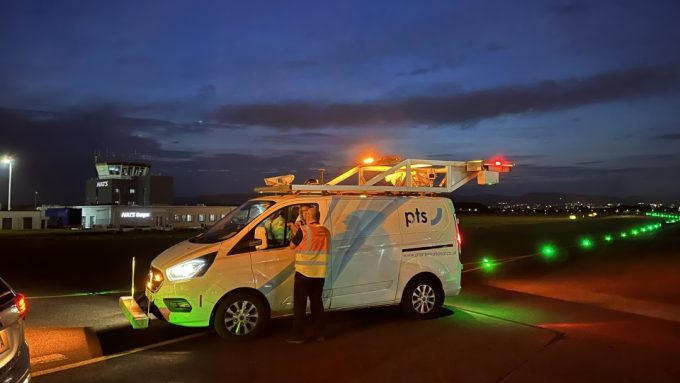
Meet the Academic helping aviation to plan future energy needs

As a child, Jinning Zhang loved aeroplanes and enjoyed building miniature aircraft at a high school modelling club. But her hobby soon turned into something more serious as she began to purse an academic journey in aerospace engineering. She relocated from China to the UK in 2018 to join Cranfield University and achieved a Masters followed by a Doctorate in her chosen subject.
“Every time I took a flight, I used to be fascinated in how the engines powered the aircraft for many hours and how planes flew at such high altitudes. But with the global effort to reduce carbon emissions, I realised it was important to help address the critical challenge of decarbonising aircraft propulsion; by moving away from jet fuelled planes to those powered by batteries or hydrogen.”Dr Jinning Zhang, lecturer in aerospace engineering at the University of Leicester
Jinning now works as an aerospace engineering lecturer at the University of Leicester and is pursuing a decarbonisation project to improve the performance of aircraft charging and refuelling infrastructure at airports, known as EH2Air: Electricity and Hydrogen towards Green Air Transport.
Her project received support last year from the Transport Research & Innovation Grants (TRIG) programme, delivered by Connected Places Catapult on behalf of the Department for Transport. In October, Jinning collected an award from Chief Scientific Advisor, Professor Sarah Sharples, on behalf of the University of Leicester for its outstanding delivery of an academic-led project for the team’s work on EH2Air.
Now she hopes to use her experience from TRIG to take another big step in her research career, by applying to become a research fellow with the Royal Academy of Engineering.
Helping young women realise their full potential
Jinning enjoys seeing the students she teaches brim with the same level of enthusiasm about aircraft as she once did. “The students are very interested in future electric aircraft technology, and several of them have received very good job offers with leading employers in the aerospace sector.”

She also takes pride in helping young women in particular to develop their passion for their subject. “Aerospace is not an easy profession to get into, and there are relatively few female students in this field. You can feel quite lonely, so girls need to stay connected, work together, communicate frequently and share their experiences.
“It’s important for women to find a mentor or experienced academic researcher to show how they can progress in their studies, and try to engage in some wider networking – not only at university but also within organisations,” she adds.
Switching attention from road vehicles to aircraft
Jinning grew up in the city of Nanjing in eastern China and excelled at maths and physics. The focus of her undergraduate studies began with road vehicles, and in particular how energy efficiencies can be achieved to improve their performance; before switching her attention to the emerging area of electric propulsion for aircraft.
Five years ago, she arrived at Cranfield University to study a Masters degree in thermal power and aircraft propulsion, and specialised in electrical systems. She developed a method of calculating the size of battery and the electrical powertrain needed during a flight, and estimated how additional weight will affect drag.
Jinning then decided to continue her research as a PhD student in the study of electric propulsion which, at the time, was a fairly new area of expertise. Those three years coincided with pandemic lockdowns which meant she had to research from home for most of her course.
Covid led some transport commentators to speculate that the popularity of international air travel may have ended. But not Jinning. “It was a difficult time, but I was not worried about any long-term effect on air travel,” she says. “People need to be connected, and I was sure that after the pandemic, demand for travel would recover very soon. In future, we may see even more of an increase in demand for flights.”
Two years ago, she joined the University of Leicester as a lecturer in engineering, and soon after accepted the role of Deputy Programme Director of the University’s MSc Aerospace course to help promote and refine the syllabus for future cohorts. Her area of academic specialism relates to the development of sustainable energy sources for aircraft – including batteries or hydrogen fuel cells – and how that may affect the design of energy infrastructure at airports.
“I try to accurately estimate airport energy demand by comparing aircraft technologies, designing energy infrastructure and developing energy management strategies and integrated control systems for aircraft.
“The next step for me to explore is to align flights with ground energy infrastructure operations; altering flight schedules to make the energy system operate more efficiently and keep plane turnaround times down.”
Jinning cannot be drawn on which fuel system is most likely to be taken forward for future aviation needs at scale. “For the moment, I'm considering the parallel operation of both battery electric and hydrogen powered aircraft,” she says.
“The energy density of batteries is very low so they might not be viable to power very large aircraft, but could represent a good secondary energy source in future. Hydrogen powered aircraft are an option, but aircraft would need to store large volumes of fuel.”
Whichever energy system is taken forward by the market, Jinning says short, medium and long-term infrastructure requirements will need to be considered to support a gradual and successful switch over to more sustainable solutions.

Benefitting from the support of TRIG
Jinning first became aware of the TRIG programme while at Cranfield University, which successfully applied for a grant to take forward new aircraft charging technology three years ago, before she applied for the 2023 grant with the University of Leicester.
“Connected Places Catapult provided a lot of support for me to deliver my project, by inviting me to attend workshops and helping me to approach industry partners through a series of ‘matching’ sessions,” she says.
“The TRIG programme also provided training sessions about how to promote our research, connect with partners and recruit staff, and how to promote our impact.
“Aviation is a very exciting field to work in, and I hope there are many opportunities to achieve commercialisation in future using our developed and researched outcomes. It's also very important to help the next generation improve how they work and study in this area.”
Find out more about the Transport Research & Innovation Grants programme.
To be alerted about opportunities at Connected Places Catapult, join our Academic Network.





